Large format printing, from the internet to your mailbox, there is a whole organization behind it!
Want to know how Scenolia wall decor products are printed?
Want to understand why the delivery time is 8 to 10 days on our site?
Just want info on large format printing?
You've come to the right place!
Scenolia is part of the Prismaflex International group (among other large format digital printers) and takes advantage of its large printer fleet consisting of 18 machines to print its orders. Prismaflex prints both products for professionals (advertising posters, banners, etc.) and wall decoration products for individuals (paintings or giant posters, wallpapers, screens, etc.). The ordering process from your computer to the arrival of the finished decorative product at your doorstep is long and full of pitfalls! A quick tour of the Prismaflex premises is a must to show you behind the scenes of large format printing. ☺
The workshop is divided into two more or less airtight parts:
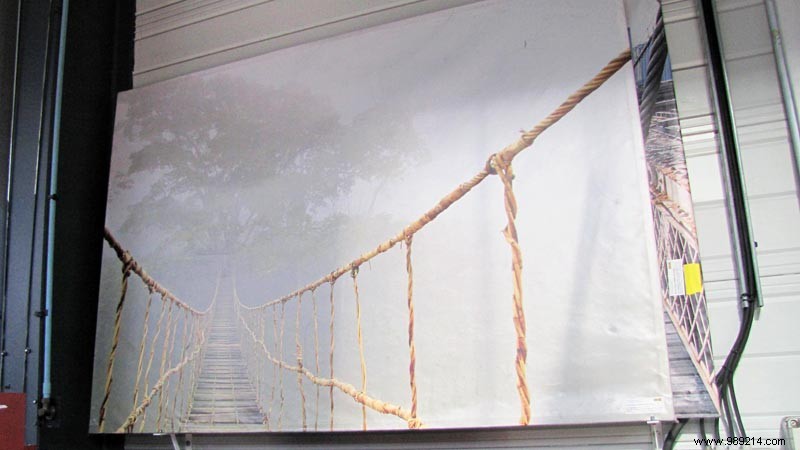
The traditional path that an order takes to the final product is as follows:
Digital printers use different printing techniques:UV, solvent and sublimation. Each has its advantages and disadvantages.
UV printing consists of projecting fine droplets of ink onto the surface of the material according to the inkjet principle. The UV ink contains a special resin. For drying, the support is exposed to ultraviolet rays and the resin allows the ink to harden. The machines that allow these prints accommodate rolls of up to 5 meters. This is the most productive way. Its other advantage is that UV ink sticks to almost all materials.
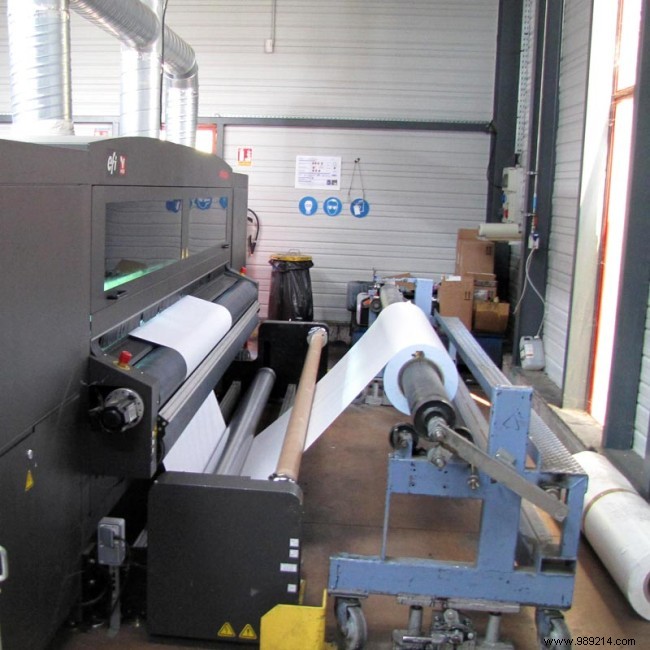
Solvent inks are water resistant and have good UV resistance. The support is heated for printing, which, combined with the solvent contained in the inks, allows them to penetrate more or less into the support. They are then resistant to abrasion and to separation from the support. The machines that allow these prints accommodate rolls of up to 5 meters. It is the cost that is interesting because it is very low. Low-cost prints (banners for large retailers) are most often printed with solvent inks.
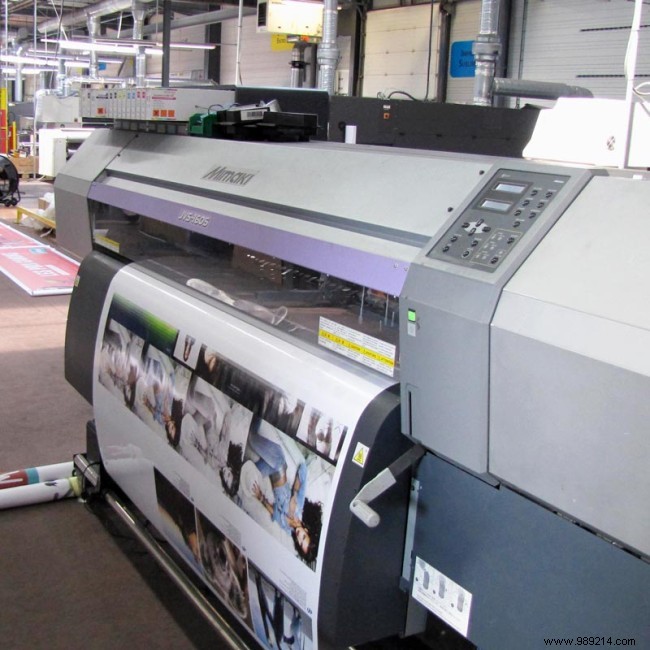
Sublimation consists of printing the image on paper and then transferring it to fabric. During the transfer, the colors "burst" which makes them very vivid. A special machine is exclusively reserved for sublimation. The operator places a first kraft paper, then the printed paper and finally the fabric on top. The machine compresses the three supports against each other. An ink transfer phenomenon occurs and the ink passes from the paper to the fabric. The paper comes out almost white. The maximum width of an image is 1m60.
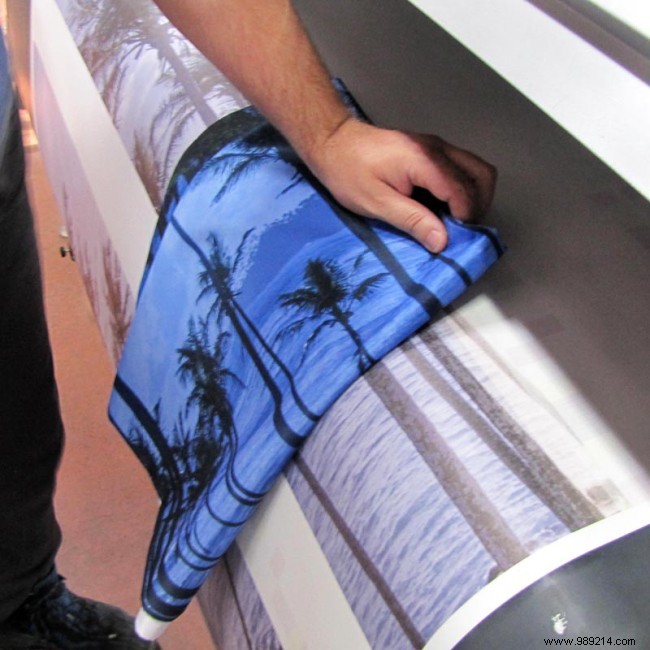
Before printing, the technician places the roll of the desired material in the machine. Adjustments must be made at each change of material to re-calibrate the colors among other things. These first “tests” cut around 2 meters of material. The prints are therefore grouped by type of support (wallpaper, tear-proof paper, textile fabric, etc.) to avoid wasting materials.
For prints on plexi, Prismaflex has a flatbed printing machine . It can print up to 3m x 2m. It is the only machine to print white. It prints in CMYK + a layer of white on top, to protect the print.
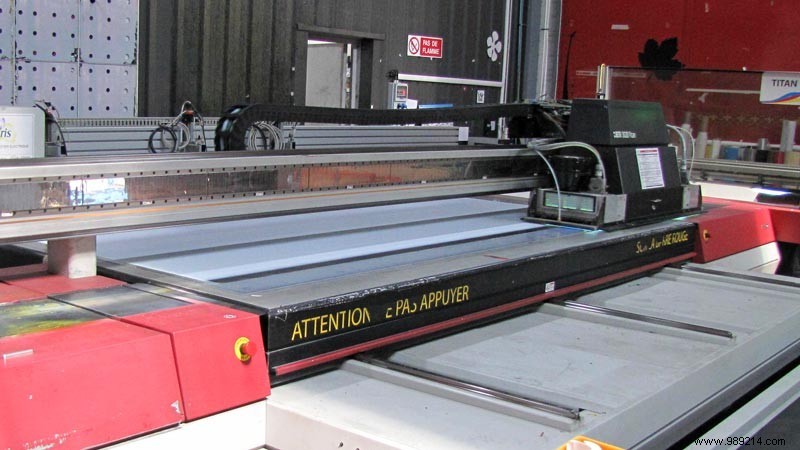
Control is the essential step after printing. The printed support passes on the control table for a check of the dimensions, the colors, the text, the absence of parasites such as ink spots... If the support is not in conformity (which happens a very small number of fortunately, our technicians have a hand ☺), it is removed from production and a new print is launched.
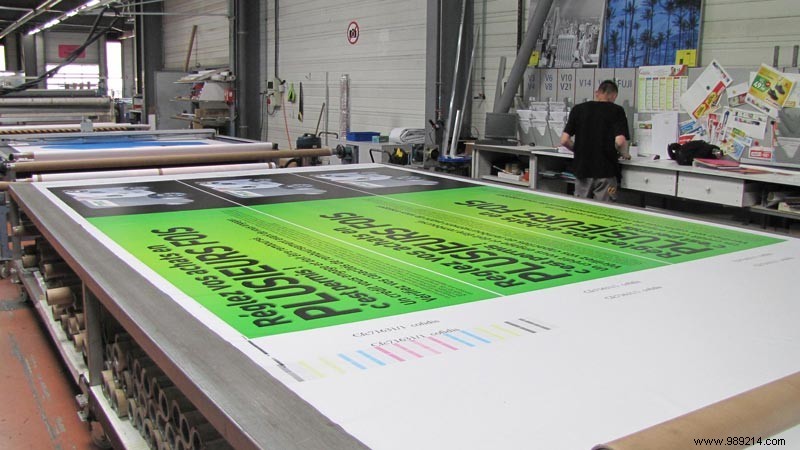
Different techniques exist. Some cutting machines adjust automatically. The technician indicates the coordinates of the segments to be cut and the machine manages itself, like a grown-up!
You can use different tools to cut. For a support up to 3mm thick, use a blade or roller . For a rigid support from 3mm, 5mm and 10mm, we cut with a cutter . Machining is less easy to manage because it makes shavings on the support but allows you to cut much thicker supports.
The last technique, the most dangerous… cutting by hand! On a huge table, the supports are cut using rulers, cutters and scissors. The special graph’it type media and stretch paper are necessarily cut by hand because they are too fragile.
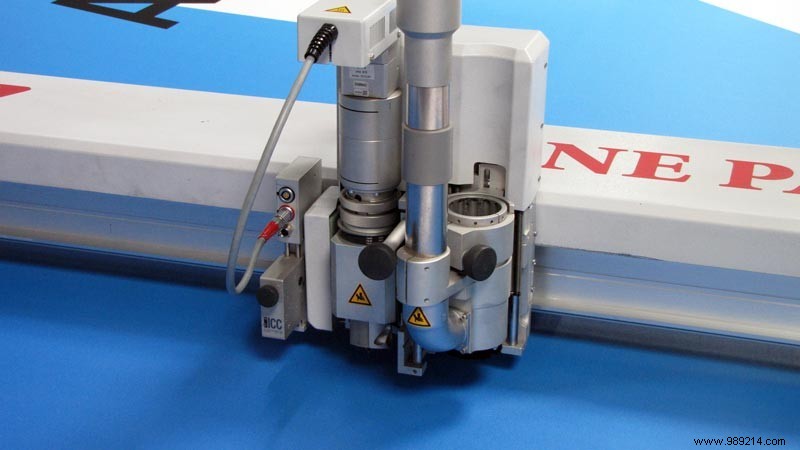
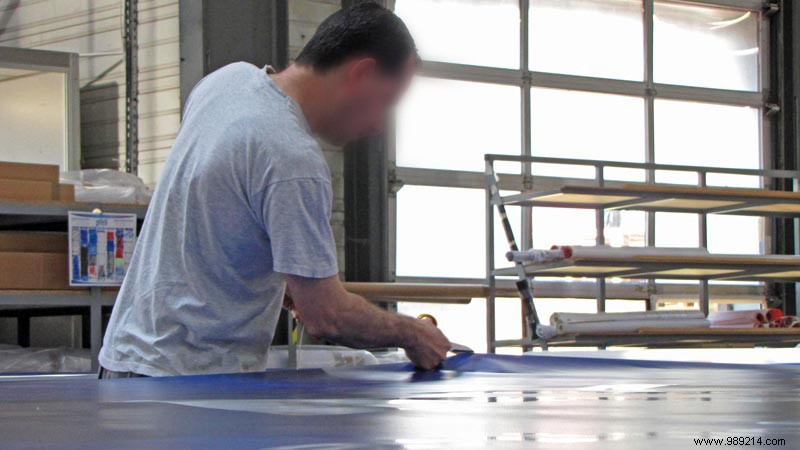
Following all this, it is sometimes necessary to add hems, straps, eyelets or sheaths which will be used for hanging. It's the making. The supports are prepared for the customers, this is the final step. Prismaflex has a unit of 3 seamstresses.
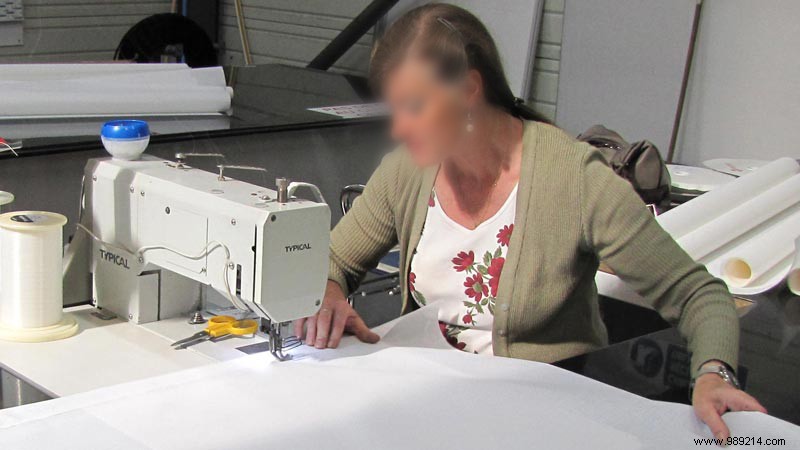
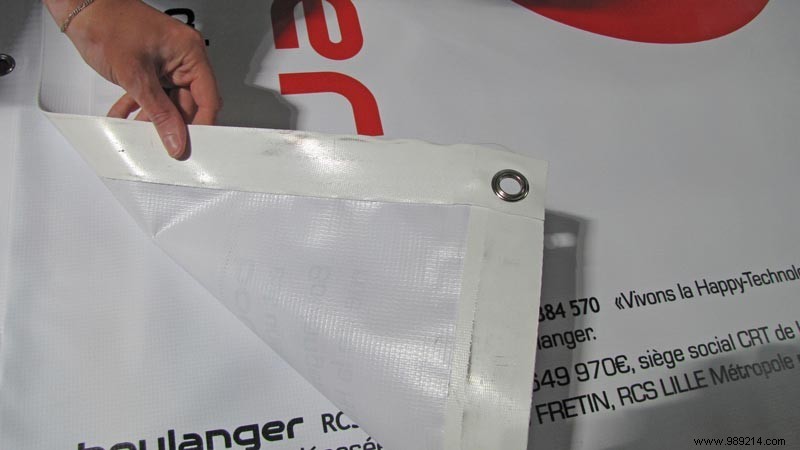
Finished and packaged wall decor products are consolidated in the shipping area. Every evening, at 4 p.m., a truck leaves Prismaflex with the packages for delivery the next day! If the number of packages is very high, a second truck comes back at 6 p.m. A new schedule is developed the next morning at 9:00 a.m. by the team leaders, for the day's departures. They give instructions and solve any problems with delays.
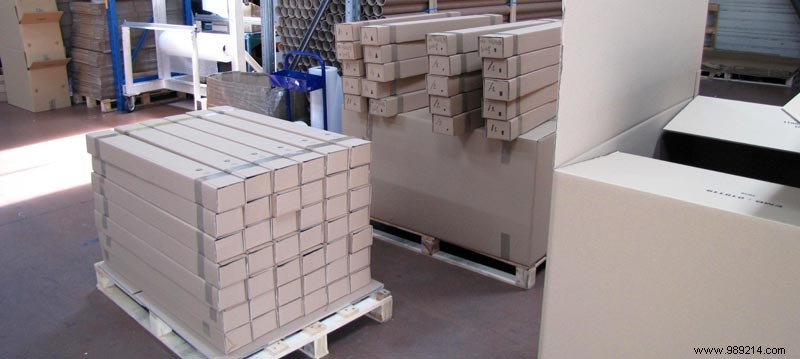
There, you now know everything about large format printing (well except for a few little secrets that we keep hidden ☺).
You should also know that Scenolia does not work from stock. That is to say that this entire production process is only launched once your order has been placed! This allows us to offer you a wide variety of visuals so that everyone can personalize their walls, stage their interior and receive the decor they want. This explains our delivery time of 8 to 10 working days.
End of the visit to the digital printing site!
Also worth knowing, Prismaflex also publishes the online printing site Prismaprint, a site specializing in the printing of solutions for professional communication (posters, banners, signs, etc.). You see, you are in good hands by entrusting your decoration projects to real experts in large format printing!